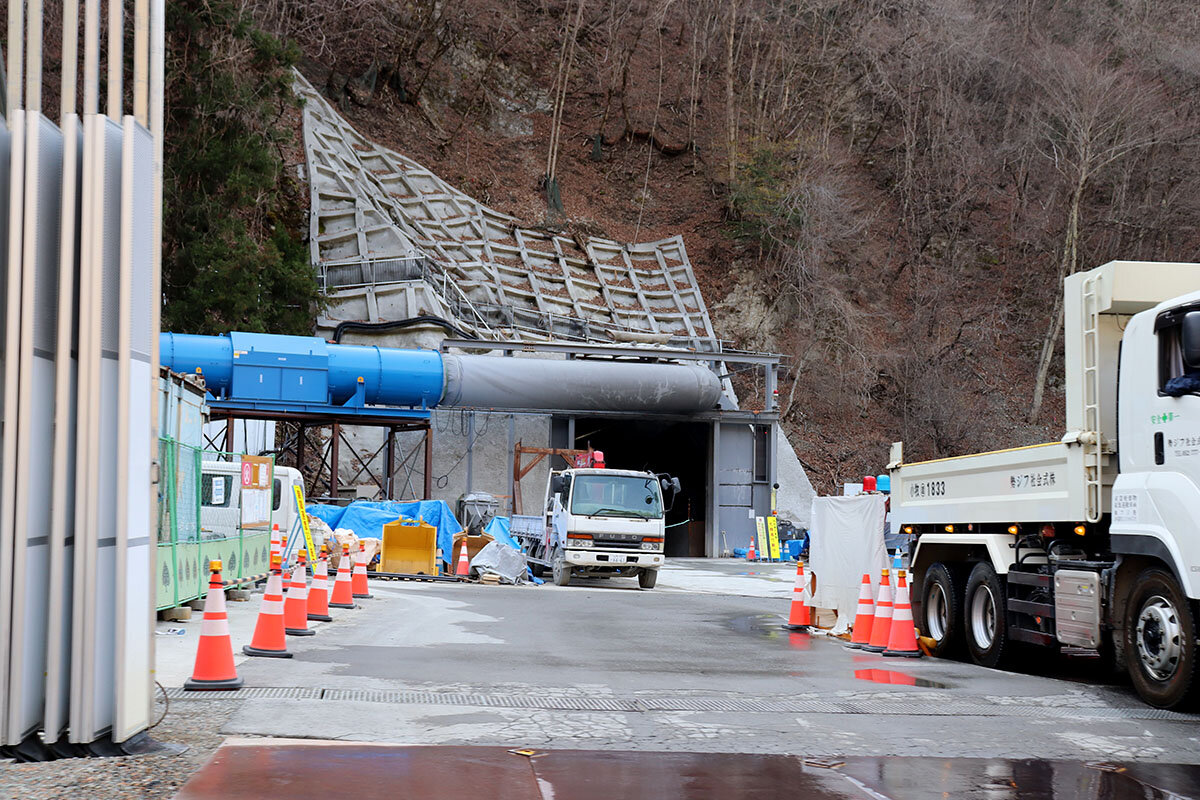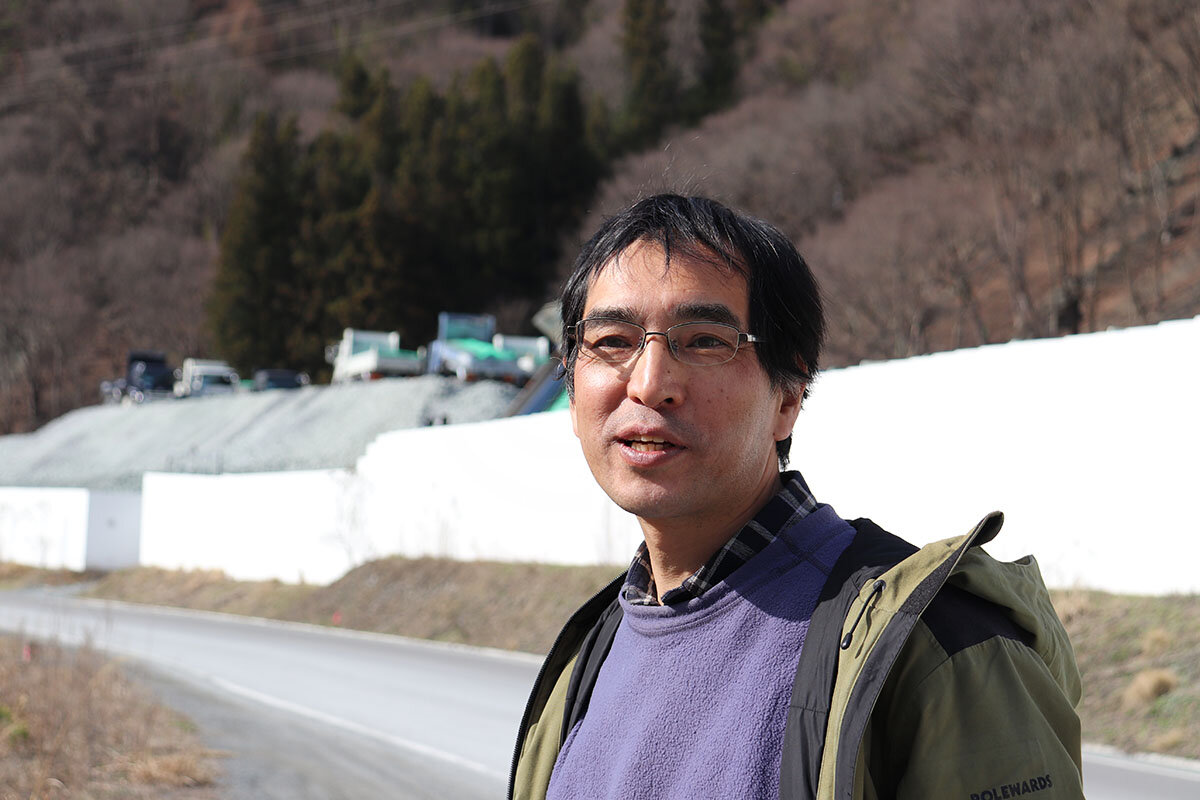Cattle farms or bullet trains? Japanese village faces uncertain future.
Loading...
| Oshika, Japan
In a remote and hidden valley with a babbling brook in the southern Japanese Alps region, Aoki Ren used to proudly show his cattle farm’s serene surroundings to fastidious buyers of quality wagyu beef.
That tranquility, however, has been shattered by helicopter noises, blasting operations, and truck traffic since the launch of local construction for the superconducting magnetic levitation train in 2016, operated by Central Japan Railway. The “maglev” train is expected to connect Tokyo and Osaka in 67 minutes – compared with the 150-minute trip offered by Central Japan Railway’s existing shinkansen bullet train – with the majority of the route enclosed in tunnels. The project cuts right through the mountain village of Oshika, where Mr. Aoki and about 940 others live among nature.
“This is supposed to be a wonderful setting,” Mr. Aoki says, shrugging his shoulders in resignation.
Why We Wrote This
In a small mountain village, a controversial train project is stirring up debate over ecological preservation and economic development. Behind that lies a bigger question about the future of the Japanese countryside.
Critics of the maglev project say Oshika is the latest in a long list of rural communities bearing the brunt of Japan’s rapid economic growth, without seeing the reward. Some residents welcome the development and hope a new high-speed rail stop located an hour’s drive from Oshika will help address the village’s population decline. But many others argue that the project threatens the very character of the village, and call for more grassroots, sustainable forms of development.
“Villagers are opposed to each other over the maglev project,” says Konno Kaito, sister of Mr. Aoki. “But what we have in common is we love Oshika.”
Loss of nature
Ms. Konno and Mr. Aoki’s parents moved to Oshika more than four decades ago from Tokyo and started the farm, one of a few left in Oshika today as the village’s population has declined 82% since 1950. Many young people in Japan’s rural areas like Oshika have moved to big cities in search of job opportunities.
The second-generation cattle rancher fears the maglev project could bring more damage to the environment, as construction workers prepare to erect a transmission tower on the thickly forested mountain behind his house and build a tunnel underneath the river.
And Mr. Aoki isn’t the only resident noticing changes.
At her wooden house that clings to the mountain slope with spectacular views of the Japanese Alps, Tohno Midori once enjoyed watching monkeys saunter into her yard and eat persimmons.
“But we have not seen any more monkeys” since hundreds of trees were cut down in neighboring areas for the maglev train, says Ms. Tohno. “I absolutely believe [the construction] has upset the ecosystem.”
Massive piles of dirt unearthed by tunneling now crowd the “beautiful stream” where she used to splash with children, she adds. Ms. Tohno decided to settle in Oshika after living in Nepal and northern India. She calls the village “Little Himalayas.”
Despite such environmental damage, Oshika Mayor Kumagai Hidetoshi says the village and other neighboring municipalities welcome the long-awaited railway, as well as plans to build a train stop in the nearby city of Iida, a one-hour drive from Oshika.
Mr. Kumagai says Oshika thanks Central Japan Railway for helping build the two new tunnels for a local road leading to a major expressway, which the village had long wanted. These improvements cost $48 million, according to a Nagano prefectural government official. Central Japan Railway shouldered 59% of the cost and the other 41% was footed by the prefecture. (The railway company also plans to launch a maglev system in the United States.)
Costs of construction
The line was scheduled to open in 2027, with the final leg completed in 2037. However, Central Japan Railway has conceded that it will be difficult to do so because of local opposition along the route and a string of construction accidents, including a fatal one last October.
“We take the repeated accidents very seriously,” the company’s spokesperson says. “We look into the causes, take preventive measures, and deal with them in a careful manner.”
Meanwhile, the COVID-19 pandemic has changed the way people live and work, and stopped many businesspeople from taking shinkansen bullet trains, Central Japan Railway’s cash cow. As a result, the company had a net loss of $1.7 billion in fiscal 2020 – the first net loss since the privatization of national railways in 1987. It has already borrowed $25 billion of public money for the new train, and the total estimated cost of the project is expected to reach $86 billion.
Longtime climber and Oshika transplant Munakata Mitsuru worries about the village’s increasing dependency on the Nagano prefectural government, as well as pollution.
“When you build a tunnel for trucks and dig big holes in the mountains, what comes next is industrial waste even if the maglev project aborts,” he says. “More public works projects mean more destruction of nature.”
Many critics point out that the Fukushima Daiichi Nuclear Power Station was sending electricity to Tokyo and its surrounding areas, not to people in Fukushima, who suffered most from the station meltdown in March 2011, the nation’s worst nuclear accident.
Experts and locals worry the maglev tunnel construction could trigger a natural disaster in the landslide-prone Oshika. In 1961, torrential rains caused landslides and flooding in Oshika and its neighboring areas, killing 136 people and destroying 1,500 homes, according to central government figures. This incident is blamed, in part, for Oshika’s shrinking population.
“It is frightening that they are excavating such a fragile land,” says Yanai Mayuko, an official at the Tokyo-based environmental organization Friends of the Earth Japan, adding that the jobs and other benefits these megaprojects bring “cannot even be compared to the risks.”
However, Ms. Yanai has noticed that some locals, regardless of their opinion on the maglev project, feel they “have no choice but to depend on something that comes from outside of Oshika,” she says. “Perhaps, that shows a fundamental problem of Japan’s outlying regions.”
Oshika’s future
Kaneko Masaru, an economics professor at Rikkyo University in Tokyo, calls the idea of urban firms building massive public works projects in rural areas “obsolete,” and says Japan needs to break away from its centralized system of development.
“It’s very important for each region to think about how to get the economy moving on its own,” he says.
Instead of relying on an infrastructure project like the maglev, many in Oshika stress the need for sustainable development.
“We can do community planning on our own while valuing what we have,” explains Yamane Sa-ki, an Oshika resident who runs a day care center for older adults and, along with her friends, conducts tours for those who are interested in relocating to the village. The region lures many people with its mountains and natural beauty, and Oshika is also a starting point for climbing the southern Alps.
In order to prevent further population decline, Oshika has enhanced support to new residents and families raising children, according to Kawamoto Akiyo, a member of the village council. She says the village pulls in more transplants than other rural areas, and many young people, including one of her own children, have come back.
Ms. Konno, daughter of cattle farmers and mother to a teenage daughter herself, shares this focus on family.
“It’s very important for adults [in Oshika] to show our children we have not given up on this land,” she says. “We love this land and will protect this land. That’s what my parents had done.”







